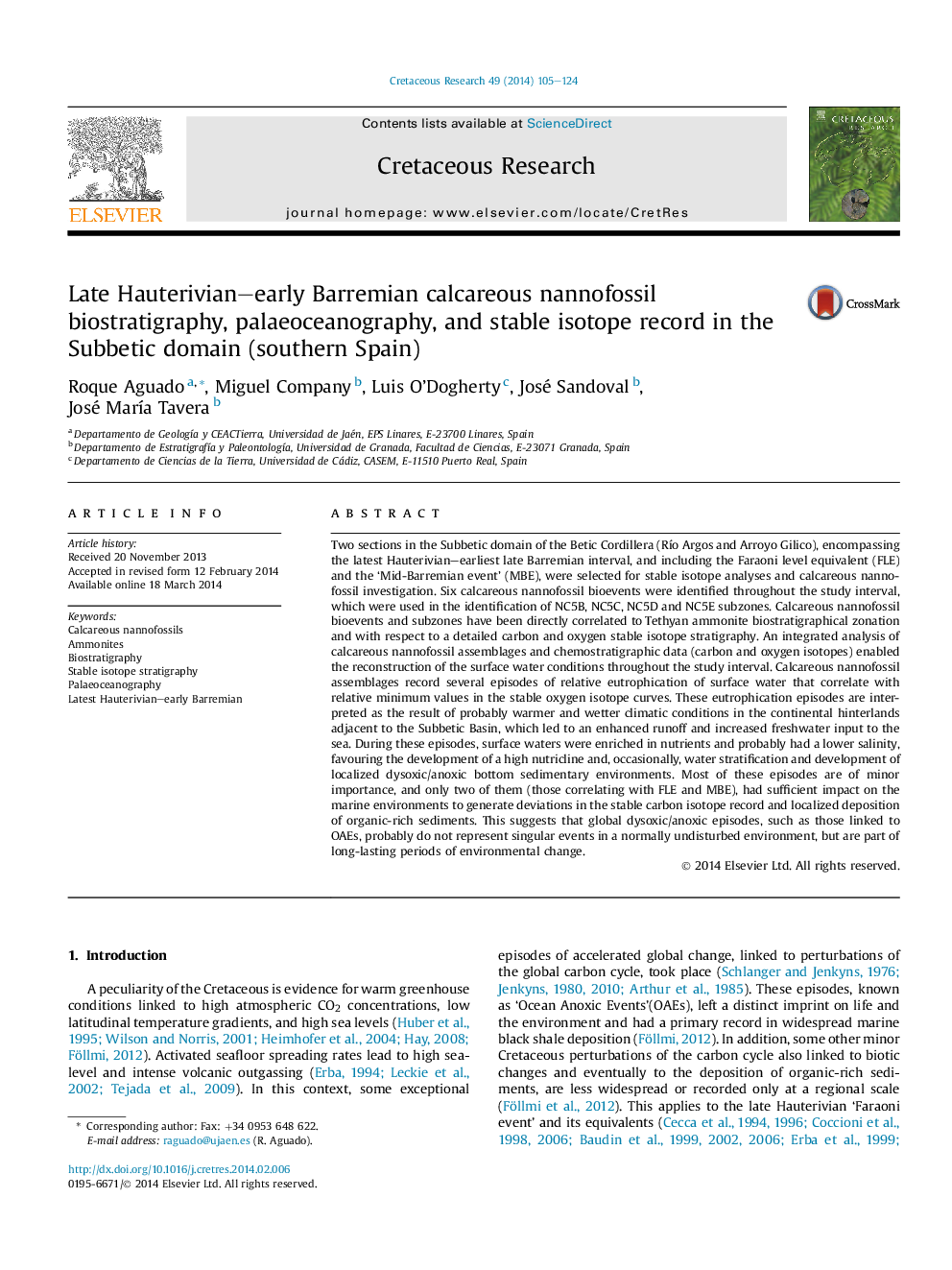| کد مقاله | کد نشریه | سال انتشار | مقاله انگلیسی | نسخه تمام متن |
|---|---|---|---|---|
| 4747002 | 1642073 | 2014 | 20 صفحه PDF | دانلود رایگان |

Two sections in the Subbetic domain of the Betic Cordillera (Río Argos and Arroyo Gilico), encompassing the latest Hauterivian–earliest late Barremian interval, and including the Faraoni level equivalent (FLE) and the ‘Mid-Barremian event’ (MBE), were selected for stable isotope analyses and calcareous nannofossil investigation. Six calcareous nannofossil bioevents were identified throughout the study interval, which were used in the identification of NC5B, NC5C, NC5D and NC5E subzones. Calcareous nannofossil bioevents and subzones have been directly correlated to Tethyan ammonite biostratigraphical zonation and with respect to a detailed carbon and oxygen stable isotope stratigraphy. An integrated analysis of calcareous nannofossil assemblages and chemostratigraphic data (carbon and oxygen isotopes) enabled the reconstruction of the surface water conditions throughout the study interval. Calcareous nannofossil assemblages record several episodes of relative eutrophication of surface water that correlate with relative minimum values in the stable oxygen isotope curves. These eutrophication episodes are interpreted as the result of probably warmer and wetter climatic conditions in the continental hinterlands adjacent to the Subbetic Basin, which led to an enhanced runoff and increased freshwater input to the sea. During these episodes, surface waters were enriched in nutrients and probably had a lower salinity, favouring the development of a high nutricline and, occasionally, water stratification and development of localized dysoxic/anoxic bottom sedimentary environments. Most of these episodes are of minor importance, and only two of them (those correlating with FLE and MBE), had sufficient impact on the marine environments to generate deviations in the stable carbon isotope record and localized deposition of organic-rich sediments. This suggests that global dysoxic/anoxic episodes, such as those linked to OAEs, probably do not represent singular events in a normally undisturbed environment, but are part of long-lasting periods of environmental change.
Journal: Cretaceous Research - Volume 49, May 2014, Pages 105–124